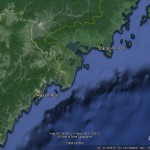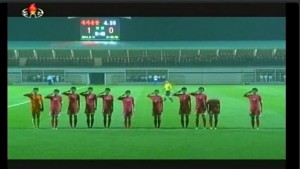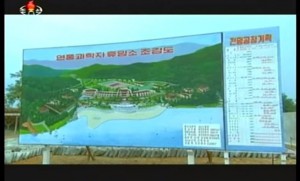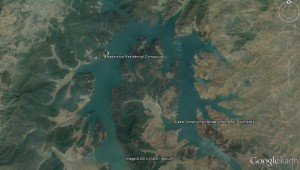According to the Daily NK:
Independently owned taxi services have emerged in South Pyongan Province, Daily NK has learned. This is the only other confirmed location of such a service in North Korea, outside of Pyongyang and Rasun.
A source in South Pyongan Province reported to Daily NK on September 11th, “Taxis have appeared in Pyungsung [Phyongsong] and Suncheon [Sunchon] Cities and are quickly gaining popularity,” adding that, “Privately owned taxis are emerging as a new way to make money and the donju [new affluent classes] are quick to invest in the opportunity.”
Taxis managed by the Daedong River Passenger Transport Service Company in Pyongyang are widespread in the capital city as well as Rasun [Rason], but the cabs operating in Pyungsung and Suncheon only require registration with the Transport Service Company, after which they and are free to operate independently.
Originally, Daedong River Passenger Transport Service Company had plans to expand its operations to other regions, but budget shortages stymied these efforts, and the source surmised this as cause for the organization to begin issuing operating licenses, for a fee, to individually owned taxis instead.
As these privately owned taxis become more prevalent in Pyongnam [South Phyongan Province], Pyongsung, and Suncheon, vehicle sales, automobile parts, and recruitment and hiring of drivers continues to rise. The source estimated approximately 18 privately owned taxis in Pyungsung currently, with at least 8-10 operating in Suncheon.
A report by the pro-North publication Choson Sinbo [run by The General Association of Korean Residents in Japan] proclaimed last year that there were 400 taxis operating in Pyongyang. A taxi dispatching service [known as “call taxis” in South Korea] were among the other purported features offered to customers by the Transport Company in the capital city.
“These independently-owned cabs are not part of a state-run enterprise; they are personal businesses,” he explained. “After being granted an operating license, the donju are keen to purchase vehicles to employ as taxis. Cars imported for use as taxis through official trading licenses are taxed at high rates, so most use smuggled cars instead.”
In Sinuiju City, the Kangsung Port sees high volumes of exports serving to procure foreign currency that funnels back into the Chosun Workers’ Party, in addition to highly active smuggling operations. Members of the donju usually request a vehicle to utilize as a cab through the appropriate trading company and receive it through the Kangsung Port.
New vehicles to service as taxis sold at Suncheon Market cost approximately $12,000, while used cars are priced in the region of $6,000-7,000 USD, with additional payments of $500 sellers who have the connections to throw in an accompanying license plate.
Even those who receive the license plate in the market must go through the proper channels to start offering their services. “Taxis purchased by individuals must be registered with the Daedong River Passenger Transport Company in Pyongyang,” he said, nothing it to be a fairly simple procedure, “After being issued an operating license and license plate, they pass through the “No. 10 Checkpoint and they are immediately able to begin business operations.”
According to the source, the majority of individuals purchasing taxis are female, while the drivers are procured from the Transport Company or personal connections. The taxi owners generally conduct personal interviews before hiring the drivers, who are mostly males in their 30s and 40s; it is fiercely competitive process–one must pass through a competition of 50:1 to secure the job.
Potential benefits of the position are enough to ensure no shortage of applicants. With the exception of those areas off limits without a special license, namely border regions and Pyongyang, it is within taxis’ rights to go to most areas. These taxis fetch approximately $100 USD [80,000 KPW] per day, excluding fuel expenses, and cab owners pay the driver roughly 50% of these profits [including gas] as a monthly salary.
The exact amount that individual taxi workers owe the transport company in Pyongyang cannot yet be verified, though the source reported that a monthly offering in the region of $500 USD, for “the sake of formality,” must be contributed to management officials there.
Taxi fees run about 15,000 KPW for a 4km ride; bus fees are approximately 2000 KPW to go the same distance. A Pyungsung-Suncheon trip costs the passenger in the region of 75,000 KPW–extremely expensive compared to the 10,000 KPW bus fee to make the same trip. However, for those doing a great deal of business and working against time, taxis are the easiest option, explaining the increase in those employing their services.
The source asserts that the North Korean authorities’ inability to expand taxi operations due to budget shortages will inevitably lead to the spread of these individually owned cab services through the North. The ease of and lack of restriction on running such an operation will also see them continue to spread, “Everyone doing business will start to use them,” he said. “There aren’t that many taxis at the moment, and the price is expensive, but as the number of those owning the vehicles increases, the price will drop, as will the cost of motorcycles and bicycles.”
Read the full story here:
Taxis Take Off in South Pyongan Province
Daily NK
Seol Song Ah
2014-9-12




